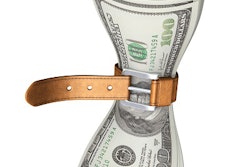
Consumers are paying more in premiums and co-payments for dental insurance than the benefits are worth, according to a new brief from the ADA Health Policy Institute. But insurers say the study uses inflated data and flawed methodology to reach erroneous conclusions.
The researchers found that total copayments and premiums of private insurance exceed the "market" value of dental care for nearly 70% of adults. Market rates are what dentists charge patients who don't have insurance.
Additionally, insurance reimbursements paid to dentists are significantly lower than market rate fees. The study also revealed that 37% of adults with private dental insurance didn't use any of their benefits in 2013, including 45% of adults between the ages 19 and 34 who didn't file any claims.
"Clearly, many adult beneficiaries, or employers on their behalf, are paying for a dental plan they are not using," wrote the brief authors, led by Cassandra Yarbrough.
Data and methods
The study analyzed more than 24 million dental claims for nearly 6 million adults who were enrolled in private dental plans for a year. The researchers used insurance premiums based on standalone dental coverage in Patient Protection and Affordable Care Act (ACA) marketplaces to calculate total costs of dental coverage to patients. But the study authors noted their analysis is "very relevant" for group dental plans provided by employers.
The researchers estimated the average annual premium was $380 for family standalone plans in ACA marketplaces in 2015. The study used the 2012 and 2013 FAIR Health Dental database, which includes 125 million people and covers 80% of the dental insurance market. The analysis used reimbursement rates charged by dentists before insurer discounts were applied to estimate dental spending at market rate fees.
The fee survey was sent to 13,052 ADA members and nonmember general practitioners and specialists; the response rate was 18.2%.
The table below shows the average spending on dental care by different age groups, according to the ADA study.
| Average spending on dental care by adult age group | |||
| Age group | Average spending on dental care | ||
| 19 to 34 | $492 | ||
| 35 to 49 | $598 | ||
| 50 to 64 | $785 | ||
Dental insurers: Flawed methodology
However, dental insurers say the study used inflated data and flawed methodology to reach erroneous conclusions about the cost of dental insurance and the value of its benefits.
 Jeff Album, vice presiden tof public affairs, Delta Dental.
Jeff Album, vice presiden tof public affairs, Delta Dental.Jeff Album, vice president of public affairs for Delta Dental, one of the largest dental insurers in the U.S., pointed out that the average premium cited by the study ($380) is based on ACA pediatric dental plans not typical group plans. Also, when employees pay their own insurance premium or part of the premium, they're paying with pretax money, Album said.
Only 1% of Americans get standalone dental coverage through ACA marketplaces, while 92% get it through group coverage by their employers, he said. This means that most insurance premiums are paid by employers.
"The market rates they used are too low, and the average network rates they used are too high," Album said. "On those two points alone, the ADA has inflated the average cost of dental insurance by 34%."
"The ADA inappropriately categorizes the full estimated premium as part of the consumer's out-of-pocket cost," he told DrBicuspid.com.
Also, the study did not take into account the network discounts used by insurers, which are lower than market rates, Album said.
For example, if the market rate for crowns is $1,000, and the agreed-upon reimbursement from the insurer is $800, it results in a $200 savings for the consumer.
Insurers also verify the need for treatments recommended by dentists.
"If you're going to prescribe a $800 crown instead of $80 filling, we'd like to see a picture of the tooth to ensure that the percentage of surface that's no longer there justifies the $800," he said.
Insurers also protect patients against fraudulent and abuse, Album said.
"About 4% of providers account for 95% of abusive, fraudulent claims that shouldn't have been submitted and may have resulted in unwanted or unnecessary care," he said.
Insurance: Is it worth it?
Album noted that 155 million American have purchased dental insurance since it was introduced in 1950. Some 96% of large U.S. employers offer it to employees, and 70% of Americans with dental insurance have most or all of their premiums paid for by their employer, he said.
As for the study's finding that many are paying for dental insurance but not using it, Album offered this analogy:
"You're also getting screwed over by house insurance, because unless you're lucky enough to have your house burn down, you're just losing money every year," he said. "The only way you don't get screwed as a consumer with house insurance is if you're lucky enough to have your house burn down -- then it will prove to be a great investment."
Perhaps the greatest value of dental insurance is that it motivates people to get regular oral care, he said.
"Insurance is really what brings people to the dentist," Album said. "People without insurance don't see the dentist."
Evelyn Ireland, executive director of the National Association of Dental Plans, said ADA researchers don't have the expertise to accurately present the cost of coverage for consumers.
"With consumer research showing that Americans with dental benefits see the dentist twice as often as those with no coverage, a false conclusion about the value of dental benefits could result in both a reduction in coverage and reduced dental care for consumers -- a result that neither our industry nor the ADA want," she told DrBicuspid.com.



















